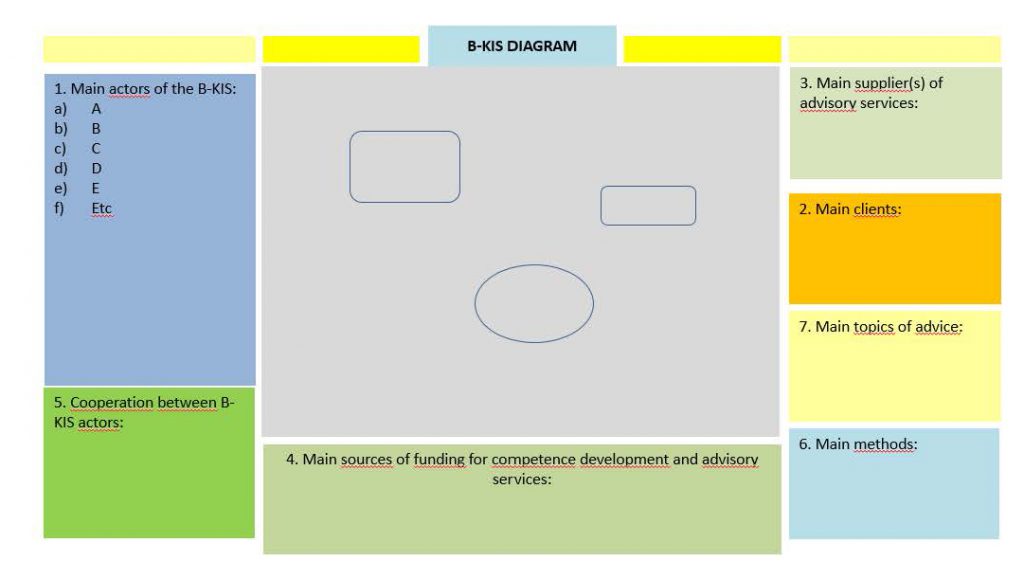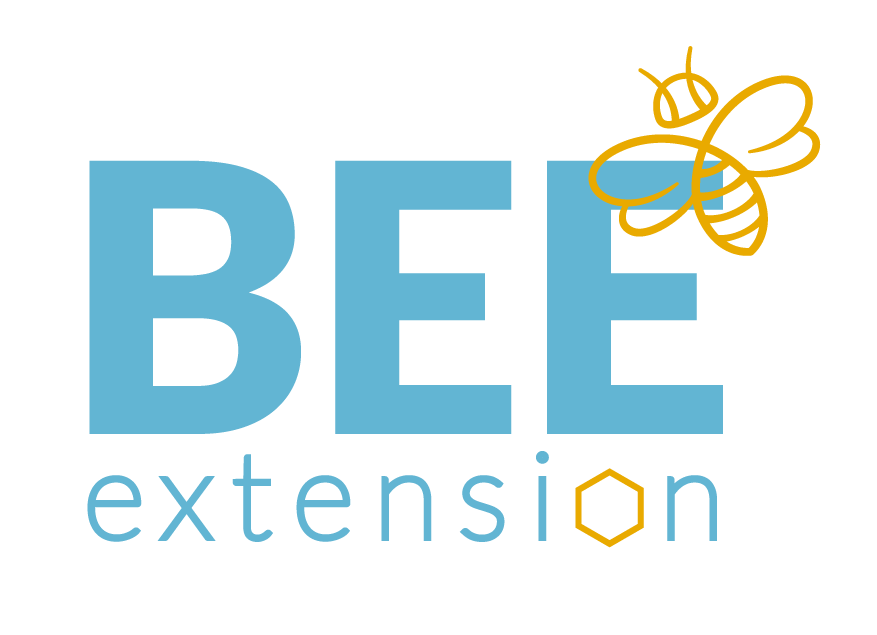Making a quick B-KIS-analysis of your country or region
Introduction
A B-KIS describes the Bee-keeping sector’s Knowledge and Innovation System in a country or region. It is a way to rather quick get a structural overview of main actors and their relationships, methods used, and specific roles, among other things. You might do such an analysis when you want to get a better understanding of pre-conditions and potentials for communicative interventions for change within the sector, but also to better understand what might be lacking in order to strengthen the sector in your country or region.
This is a short version of the method, which of course could be done both more thoroughly and scientifically. The suggested approach is based on your and some colleagues/partners existing knowledge and experience of the bee-keeping sector. It is possible to develop this description and preliminary analysis in 3 hours more or less. If you do it with a mix of stakeholder it will become a much richer picture, why a workshop format with 6-8 participants is the best approach.
What is a B-KIS?
So what is this B-KIS all about? Well, it is an established way to describe and compare the different knowledge and innovation systems. In different countries we have, by tradition or by political reasons, chosen to organize knowledge development and dissemination in different ways. In Europe there are some common threads as well as important difference when looking at, for instance, the agricultural sectors. Many of you that are working within the bee-sector in Europe are well aware of the differences between our countries, but it is often described more systematically. The Smartbees-project has done it within one of its workpackages, and a summary of findings could be found here: länka till dokumentet/texten “Analysing the B-KIS in Europe_an overview” .
The challenges to develop the bee-sector and to become more innovative differs between regions and countries in Europe. In some countries we might lack state support for competence development, in other advisory services and in another a lack of vertical or horizontal cooperation to use existing potentials, etc. By comparing B-KIS we will be able to suggest adapted strategies to strengthen the knowledge and innovation system.
The issues to be described in a B-KIS-analysis
Below you find a template which could be used to guide discussions and collect relevant data (figure 1). A suggested workshop approach would be as follows (the same numbers as in the template below):
-
- List all the actors that you can think of as being involved in the beekeeping sectors knowledge and innovation system (app. 30 minutes)
Prioritize and list the most important or main actors for knowledge development and dissemination. Put them on the template’s upper left corner (app. 15 minutes)
Identify the main clients or target groups; that is, are specific groups of bee-keepers targeted or are all ‘invited’ in all activities? How do you divide different sub-groups of beekeepers? (app. 20 minutes) - Which of the actors identified earlier are the ones that are the main suppliers of advisory services today? (app. 20 minutes)
- What are the main sources of funding for competence development and advisory services in the national B-KIS, is it both private and public, and what does the beekeepers themselves pay for? (app. 25 minutes)
- How would you describe the cooperation between actors in the B-KIS? Are there “gaps” in the “knowledge chain” somewhere, f.i., from research to practice? Some short sentences on your view on this. (15 minutes)
- Which are the main methods used for competence development (but also innovation) in your B-KIS? Methods could be for instance individual advisory services, training workshops, train-the-trainer activities, study visits, courser, joint development projects, etc. List the ones you believe are the most important for the main target groups. (app. 30 minutes)
- If you need to put up five themes which you would say are the most important topics of advice for beekeepers today, which would these be? (app. 20 minutes)
- List all the actors that you can think of as being involved in the beekeeping sectors knowledge and innovation system (app. 30 minutes)
In total app. 3 hours workshop. You can end the activity by illustrating the B-KIS in the middle of the template. Depending on how used you are in doing this, it takes different long time. For inspiration of some different ways of doing it, take a look at the document “Analysing the B-KIS in Europe_an overview”.
The template that could be used to facilitate and structure the B-KIS description and analysis:
 A template which can be used to describe and analyse, as well as facilitate a discussion on a regional or national B-KIS (Bee-keeping Knowledge and Innovation System). Download the template here
A template which can be used to describe and analyse, as well as facilitate a discussion on a regional or national B-KIS (Bee-keeping Knowledge and Innovation System). Download the template here
